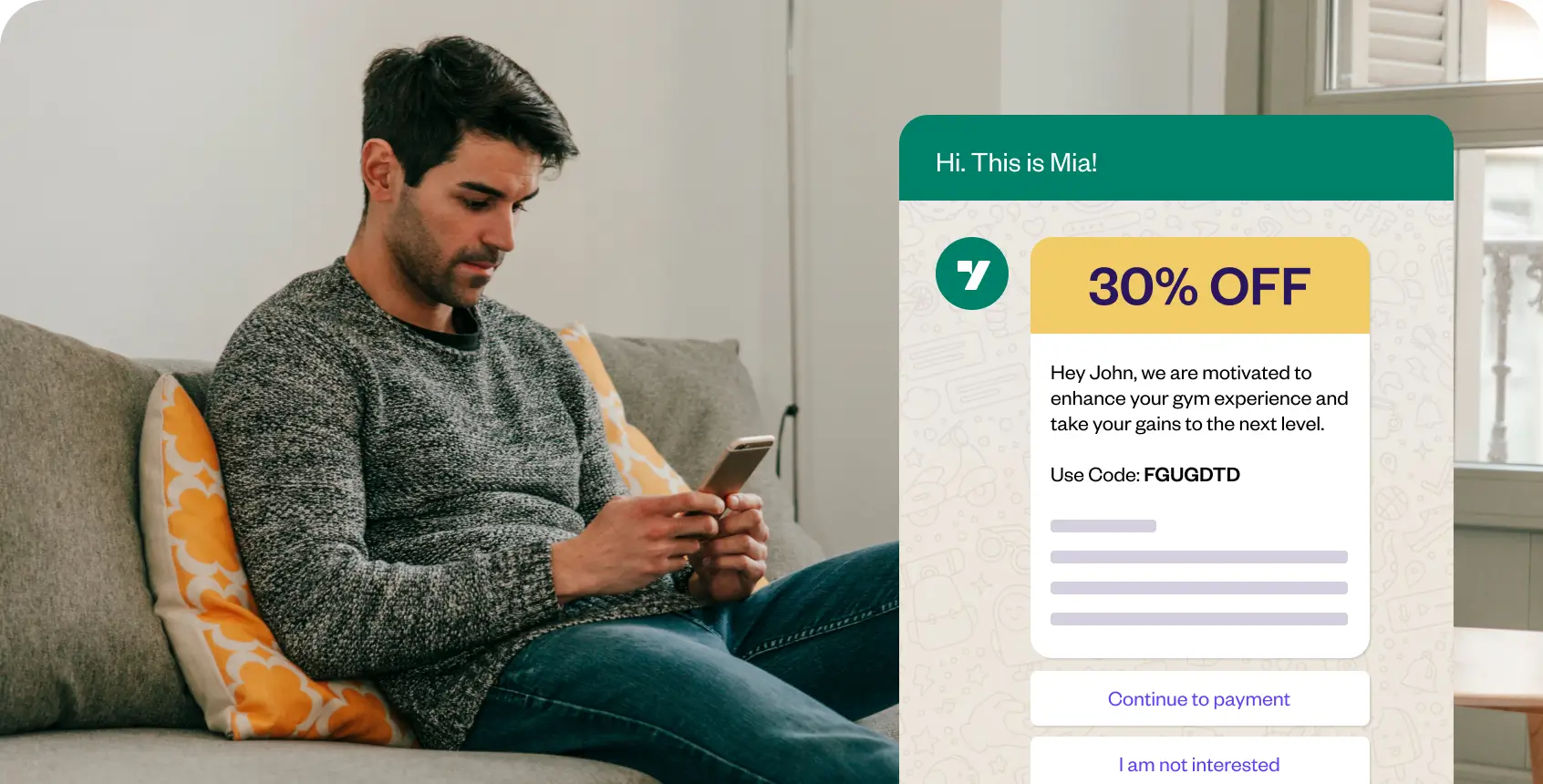Executive summary
Businesses today are constantly seeking innovative ways to engage with customers. Communication has gone beyond traditional channels like SMS and emails. One such breakthrough has been the rise of WhatsApp notifications. Let us explore the intricacies of WhatsApp message templates for businesses, showcasing 11 WhatsApp notification message templates tailored for various needs. From account updates to transportation alerts, businesses can now leverage the power of WhatsApp to ensure a seamless, customer-centric communication experience.
Picture this: A leading e-commerce giant used to struggle with cart abandonment issues, losing significant revenue every month. They switched their notification strategy, incorporating timely WhatsApp reminders. The result? A considerable decrease in abandoned carts and a marked rise in satisfied customers.
This transformation is the art of communication perfected.
In a business landscape where immediacy and personal touch are paramount, WhatsApp has emerged as the titan of customer engagement. A report indicates that businesses using WhatsApp for communication witness a 40% boost in customer responsiveness. But navigating this vast ocean requires more than just sending messages; it mandates the right message. To that end, we’ve collated the top-tier WhatsApp notification message templates. Crafted with insights from industry leaders, these templates are your blueprint to cultivate loyalty and drive engagement.
Related must read:
- WhatsApp chatbot – How to create AI WhatsApp bot?
- WhatsApp ads: A comprehensive guide for maximize click-to-chat
- WhatsApp session messages, their limitations and overcoming them
- Auto-reply on WhatsApp – Best practices and benefits
WhatsApp notifications: What you need to know
Let’s face it – in our digitally swamped world, capturing a user’s attention is like trying to hold onto sand; it’s tricky and slips away before you know it. But WhatsApp notifications offer businesses a personal handshake in an overcrowded digital market.
WhatsApp API account: The basics
It’s easy to think of WhatsApp as just our go-to app for catching up with friends or family. But for businesses, it’s a different ball game. You can’t just get onto your regular WhatsApp and start sending promotions. WhatsApp designed two special playgrounds for businesses: the user-friendly WhatsApp Business app and the WhatsApp Business Platform (formerly the WhatsApp Business API).
Why opt for the latter? The WhatsApp Business Platform is like having a multipurpose tool for customer communication. It lets businesses automate, customize, and scale their interactions. You can send personalized templates, integrate it with your current CRM systems, and reach out to customers, even if they didn’t save your number.
What’s the catch? Using the WhatsApp Business API is not a free-for-all. While customers aren’t charged for interactions, businesses bear costs determined by the nature of the message and the user’s country code. Now, while any enterprise can technically tap into this API, it demands a blend of technical proficiency and legal acumen. Customizing it, marrying it with chatbots, orchestrating CRM synchronizations, and upholding data security are tasks that not every business is equipped for. A WhatsApp Business Solution Provider (BSP) like Yellow.ai comes in here. Such providers simplify the intricate process, requiring minimal input from the businesses and ensuring a streamlined experience.
WhatsApp message templates: The conversation maestros
Ever had someone start a conversation, and you felt compelled to respond? That’s the essence of WhatsApp message templates. They aren’t just texts thrown into the digital void. Instead, they’re carefully crafted conversation starters waiting for WhatsApp’s approval.
With WhatsApp’s approval, your notifications are invites for engagement. Each template is designed to spark a connection, be it a promotional message, a nudge about a forgotten cart, or just festive greetings. The goal? To transform a one-sided message into a dialogue, building relationships one chat at a time.
In our upcoming sections, we’ll dive deep into crafting these conversation templates, ensuring every message strikes a chord and not just becomes another notification in the pile.
Things to remember when creating a WhatsApp push notification:
Navigating from our exploration of the artistry behind WhatsApp message templates, let’s understand the details to ensure that your push notifications are also compliant and effective besides being compelling.
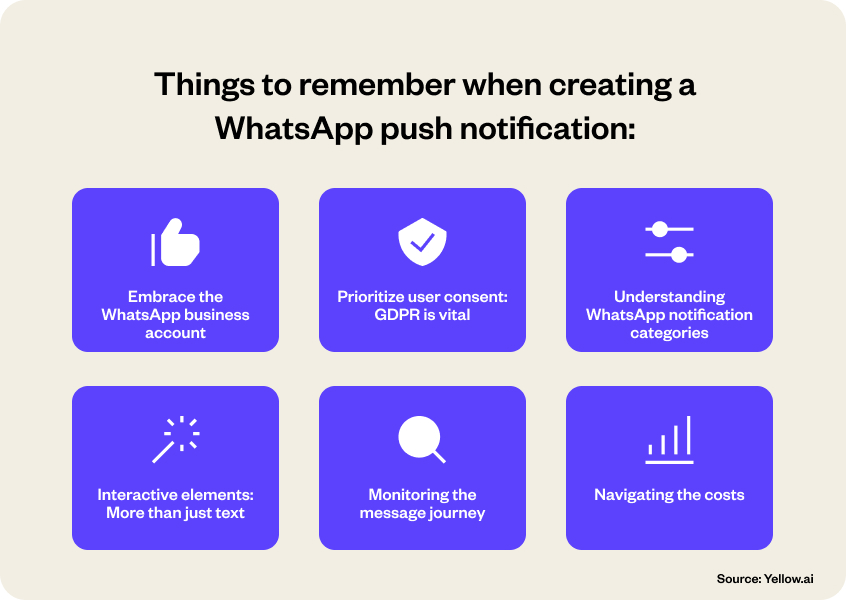
1. Embrace the WhatsApp business account
First and foremost, ensure you’re armed with a Business Account. It isn’t just a tag but a ticket to the exclusive benefits it brings. The type of account dictates the reach of your notifications, the nature of messages sent, and the insights garnered.
While the WhatsApp Business App lets you send messages to a limited audience (up to 256 users at a time), the WhatsApp API is where the magic happens. It lets you send diverse messages, carve out specific target groups, and harmoniously integrate chatbots with your CRM, amplifying the personal touch.
2. Prioritize user consent: GDPR is vital
WhatsApp, true to its reputation, holds user privacy paramount. So, before you start sending push notifications, ensure users have given explicit consent. Apart from being a legal requirement under GDPR, it’s a cornerstone of trust in digital communication. So, consent isn’t a nicety; it’s a necessity.
3. Understanding WhatsApp notification categories
Every message has a purpose, and WhatsApp acknowledges this by categorizing them. From authentication messages that provide crucial one-time passcodes, utility notifications that handle transaction-related updates, and even marketing nudges that introduce new offerings – your content must fit within these specified categories. And remember, WhatsApp watches out for overt sales pitches, focusing on value-driven, user-centric content.
4. Interactive elements: More than just text
It is no secret that attention spans are decreasing. Hence, visual and interactive content reign supreme. WhatsApp doesn’t confine you to text. Integrate images, videos, or documents to make your notifications pop. Further, you can foster a more engaging two-way communication with dynamic response options and list messages. And with platforms like Yellow.ai, crafting and managing such enriched content becomes a breeze.
5. Monitoring the message journey
It’s not just about sending messages but understanding their journey. Did your user read it? Was it delivered successfully? Or did it unfortunately end up in the digital trash? Yellow.ai provides tools that let businesses monitor the notification status, enabling them to fine-tune strategies for maximum impact.
6. Navigating the costs
Like all good things, WhatsApp notifications come at a price. And it’s imperative businesses remain updated about these. Marketing notifications, though enticing, have their limitations to keep user experience uncluttered. The pricing dynamics shift with country and message type, so keeping a vigilant eye on the official pricing guidelines becomes paramount.
What are the ways to send WhatsApp business notifications?
Transitioning from crafting effective WhatsApp notifications, let’s explore the methods of delivering these messages to your audience.
1. Manual WhatsApp business notifications
Initiating conversations: WhatsApp mandates that customers initiate the conversation. So, before you message them, they need to message you first. This approach safeguards users from unsolicited messages.
Message templates: If you don’t respond to a user’s initial message within 24 hours, you can use an approved message template to reach out. WhatsApp enforces this to ensure businesses provide valuable, non-spammy interactions.
2. Automated WhatsApp broadcasting
Bulk messaging: The WhatsApp broadcast feature allows businesses to message multiple contacts simultaneously. Although you can have countless broadcast lists, each list is capped at 256 contacts.
Contact requirements: There’s a catch. To receive your broadcasts, a customer must have saved your business contact number in their phone.
How to craft the best WhatsApp notifications?
Using WhatsApp for business communication goes beyond just sending messages. It’s about crafting the right message that’s concise, informative, and relevant. Here’s a closer look at how and why to design WhatsApp notifications for various business scenarios:
Want to get started faster?

1. Account update
Updates related to an account directly concern security and trust. Use clear, non-ambiguous language and always provide a direct way for the user to reach out if there’s a problem.
Sample
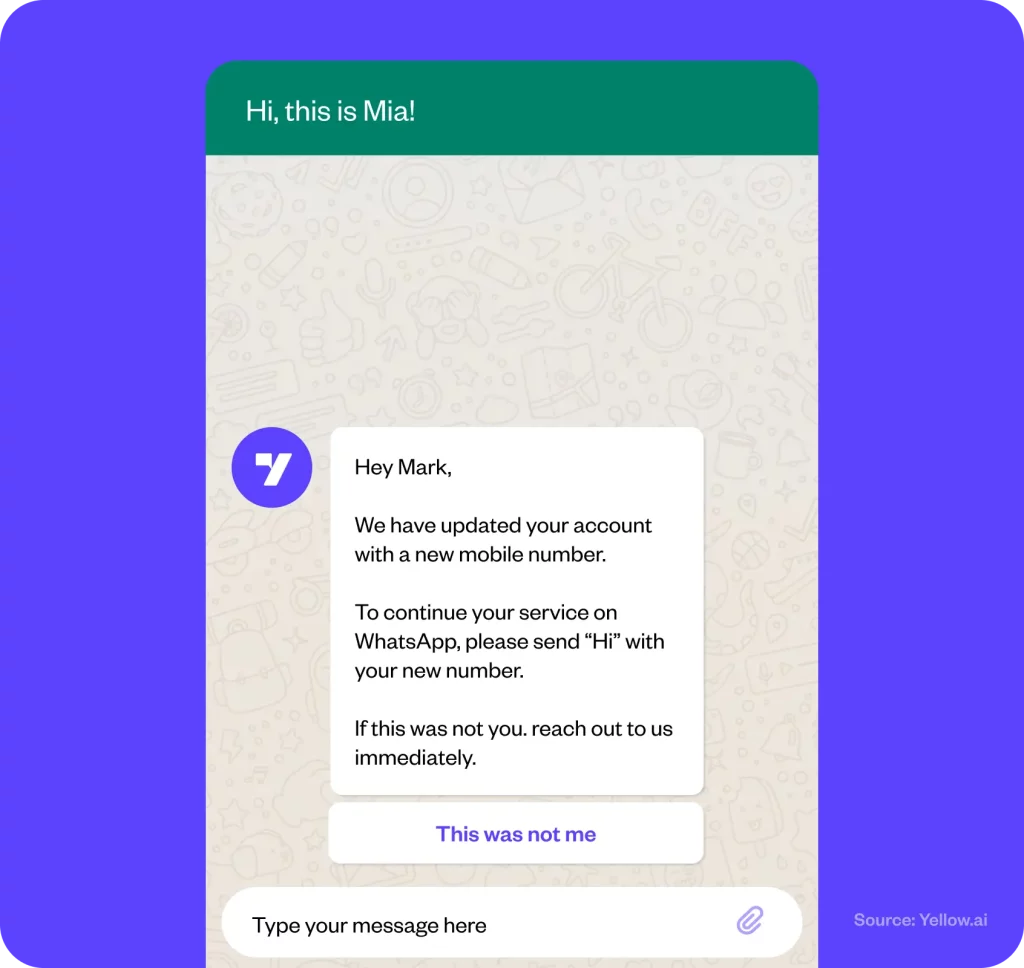
2. Alert update
Timely alerts help maintain transparency. They can be used to convey important changes or events, ensuring that customers are always in the loop. Always provide a context for the alert to avoid confusion.
Sample
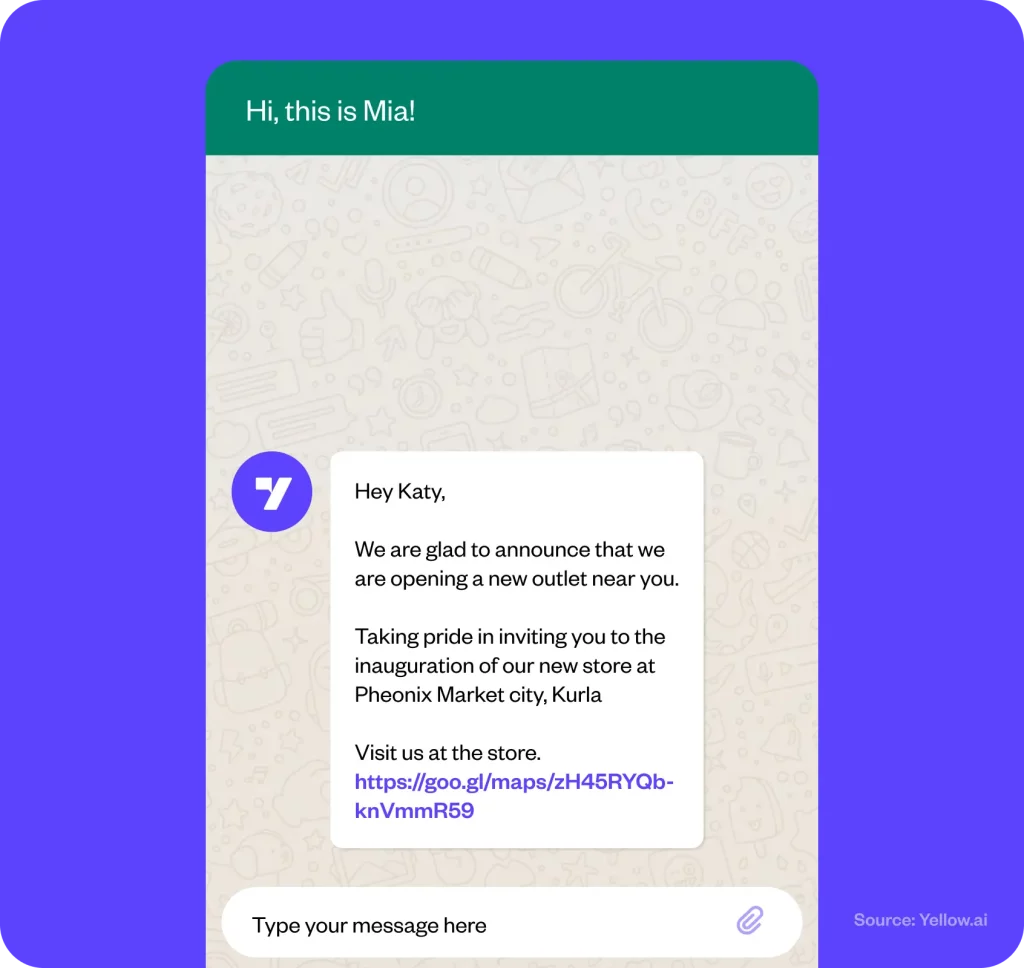
3. Payment update
Assure customers of payment security and enhance trust. Quick confirmations give peace of mind that their transaction was successful. Include order details for clarity and assurance.
Sample
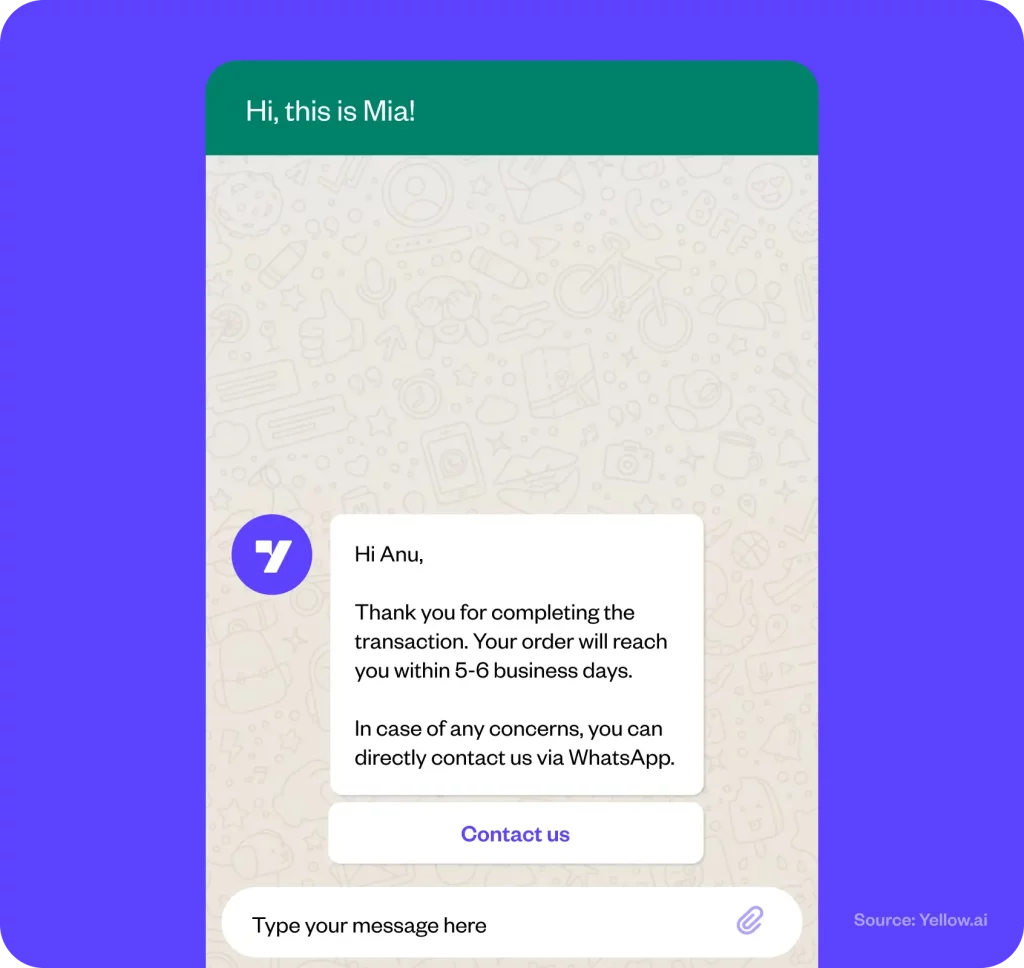
4. Appointment update
Reminders or changes about appointments help reduce confusion and potential conflicts, ensuring a smooth experience for both businesses and customers. Remind customers at least 24 hours in advance to allow any necessary changes.
Sample
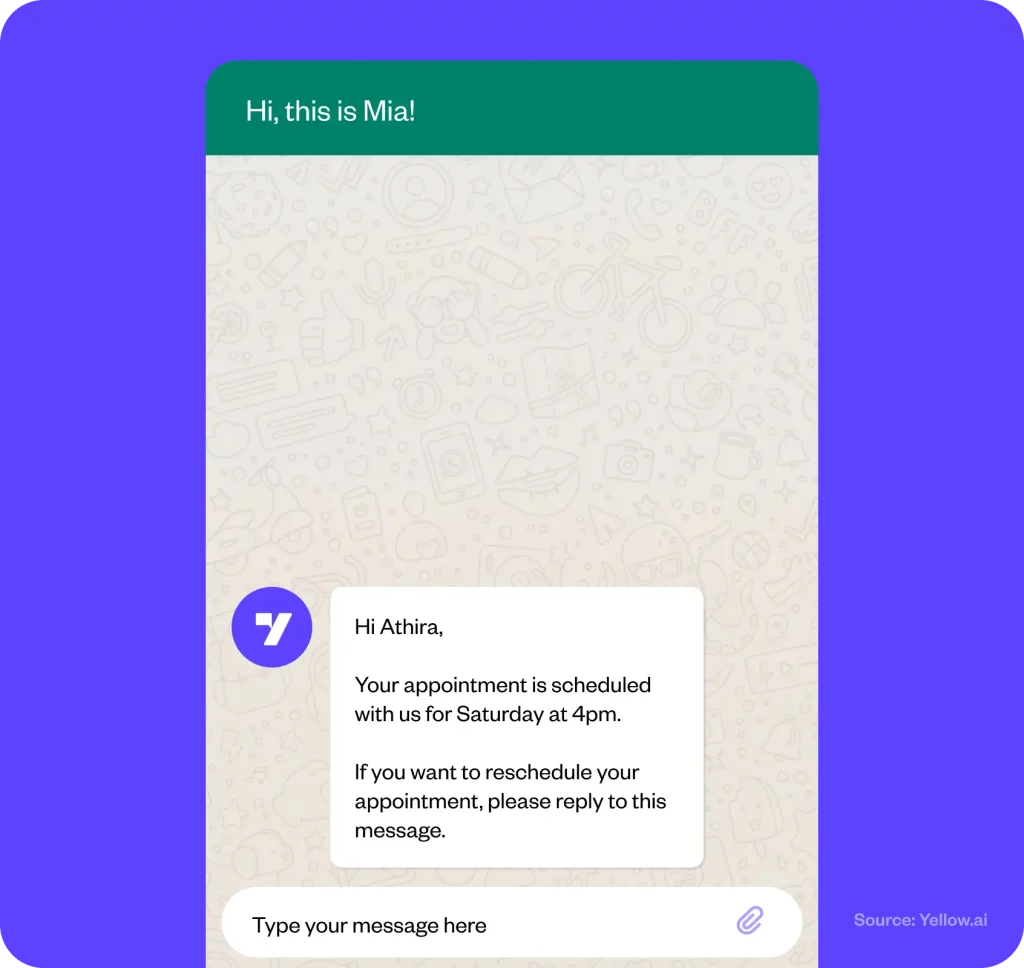
5. Reservation update
A confirmation assures customers that their plans are solid. It sets expectations and builds excitement for the upcoming experience. Include a small gesture like thanking them to make them feel valued.
Sample
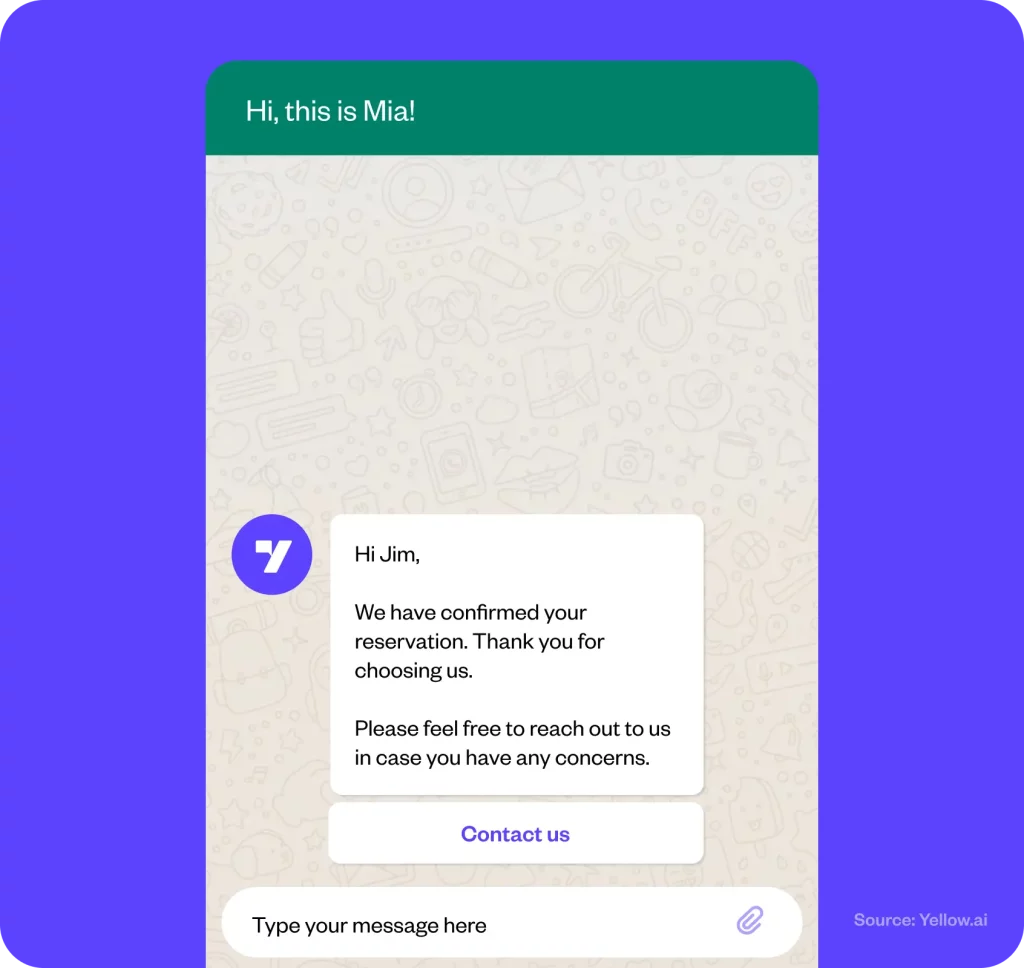
6. Auto-replies
While businesses can’t be available 24/7, auto-replies ensure customer messages are acknowledged, making them feel valued even during off-hours. Offer an alternative like an FAQ link or website resources for immediate queries.
Sample
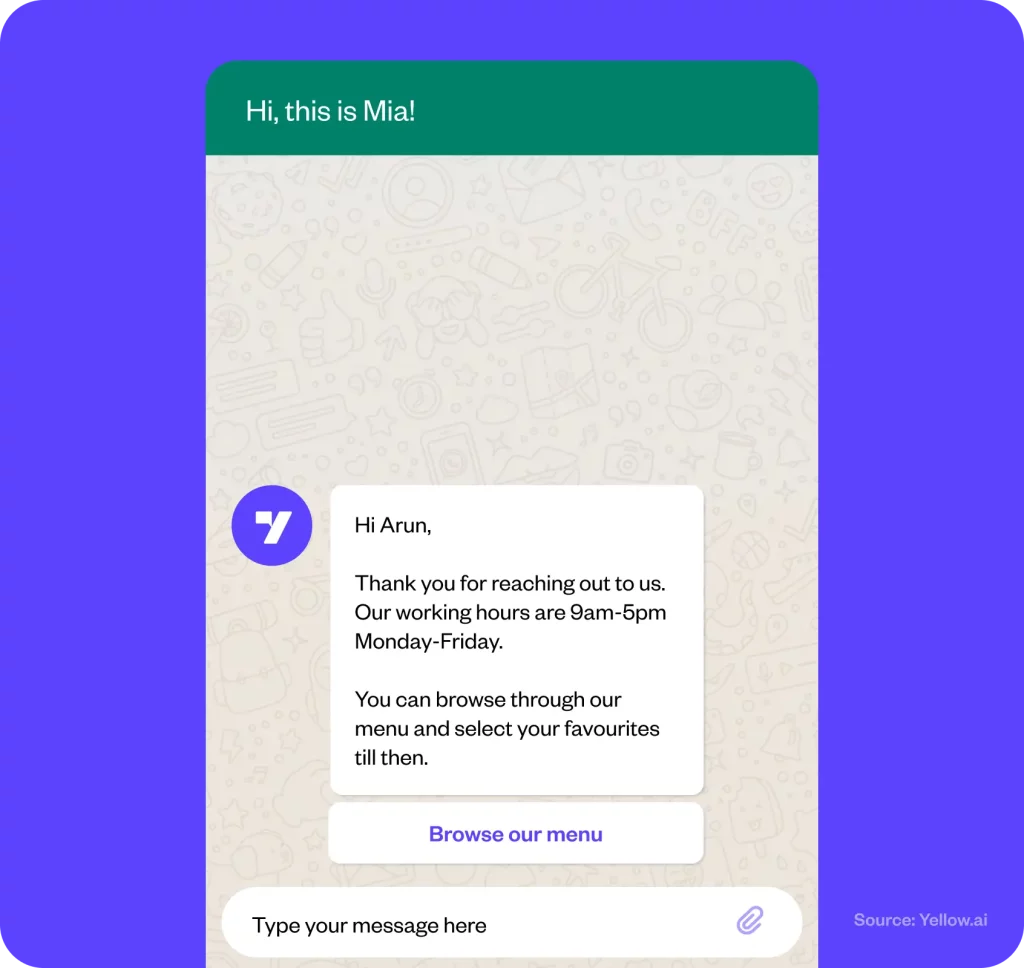
7. Shipping update
Consistent shipping updates keep the customer informed about their order’s journey, building anticipation and assurance simultaneously. Provide a tracking link for a more interactive update.
Sample
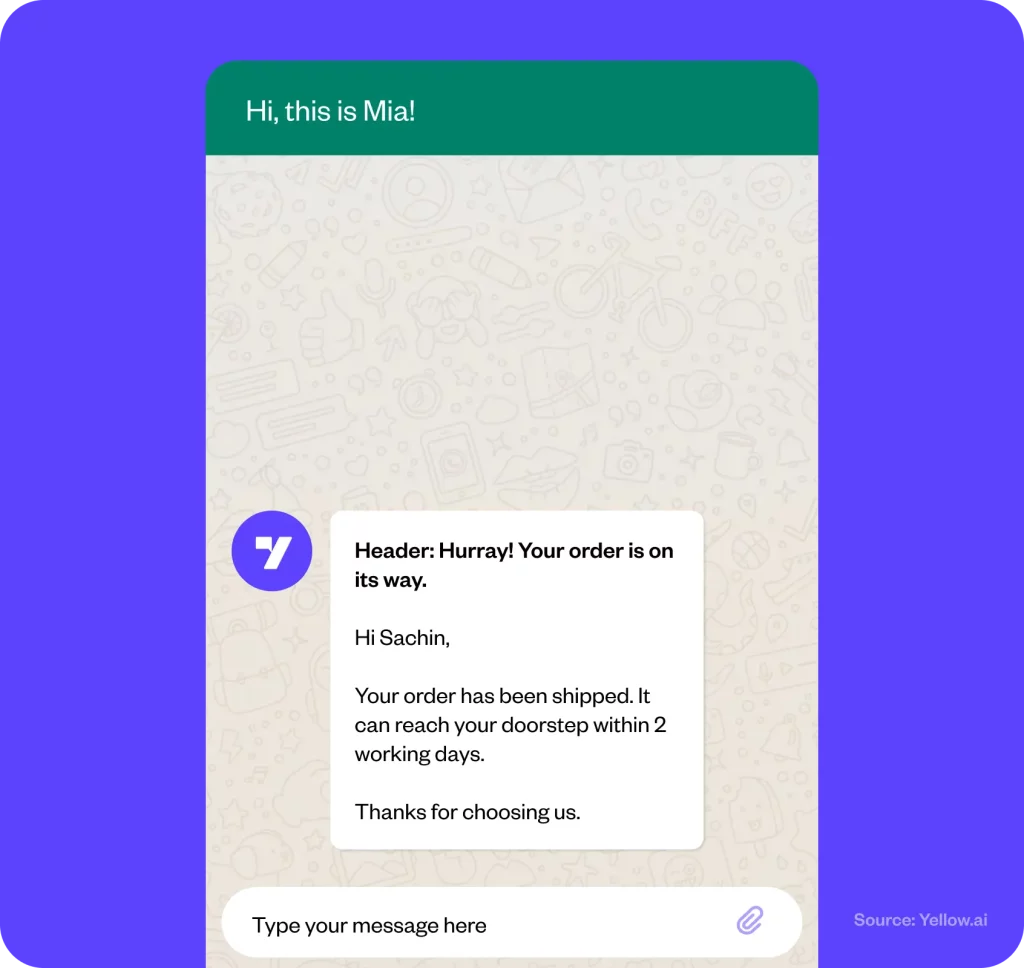
8. Issue resolution
Acknowledge issues and assure customers that their concerns are being addressed. It cultivates trust and shows a proactive approach. A time estimate for resolution can manage expectations better.
Sample
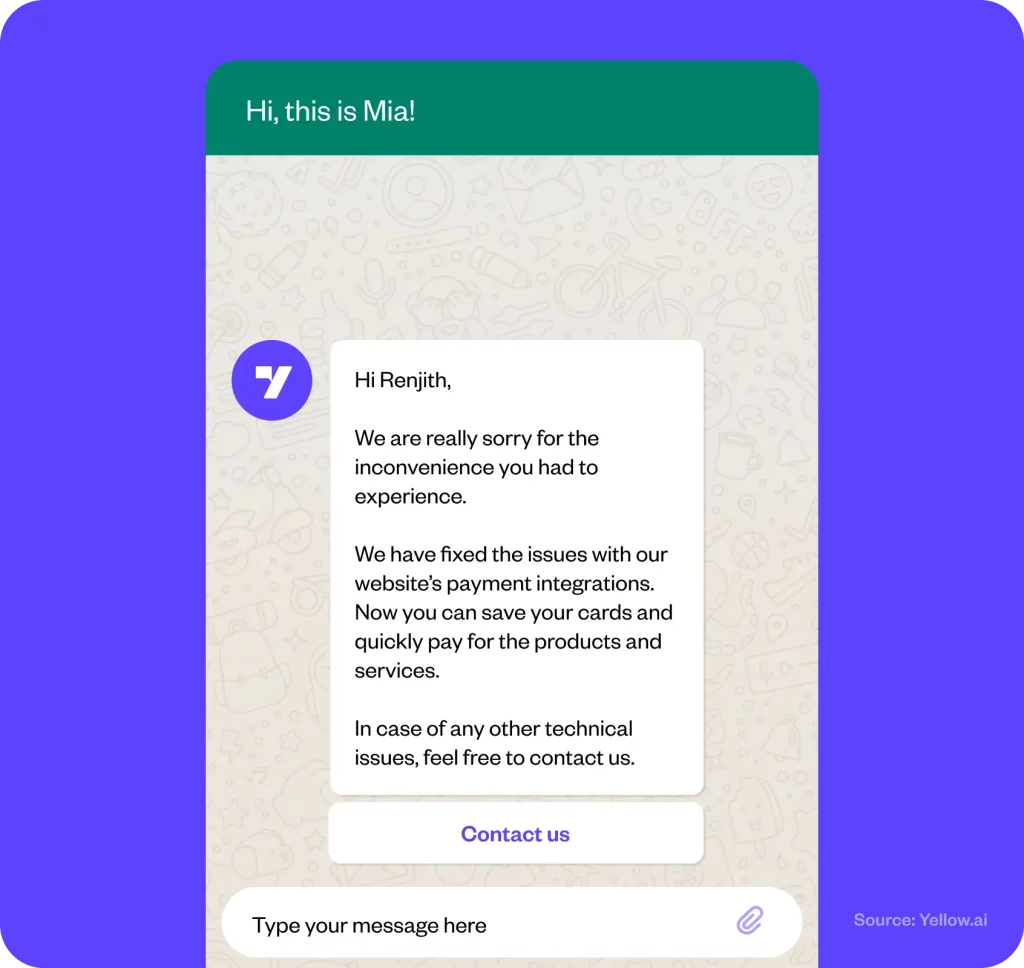
9. Finance update
For anything related to money, transparency is crucial. Clear notifications about financial transactions ensure users are always in control of their finances. Consider including a contact number or link for immediate concerns regarding the transaction.
Sample
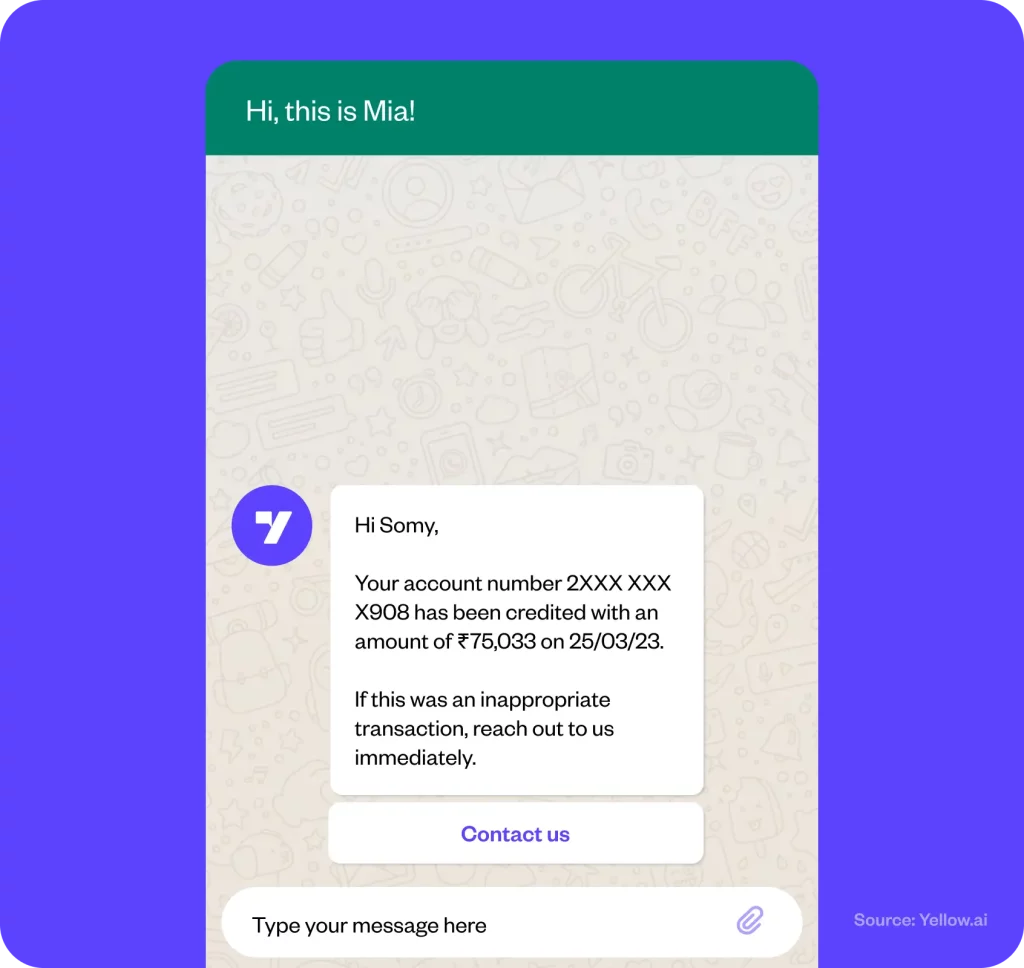
10. Ticket update
When customers raise concerns, they seek acknowledgment and prompt action. Update them about ticket statuses to maintain good communication flow. Provide the ticket number for future reference and ease of tracking.
Sample
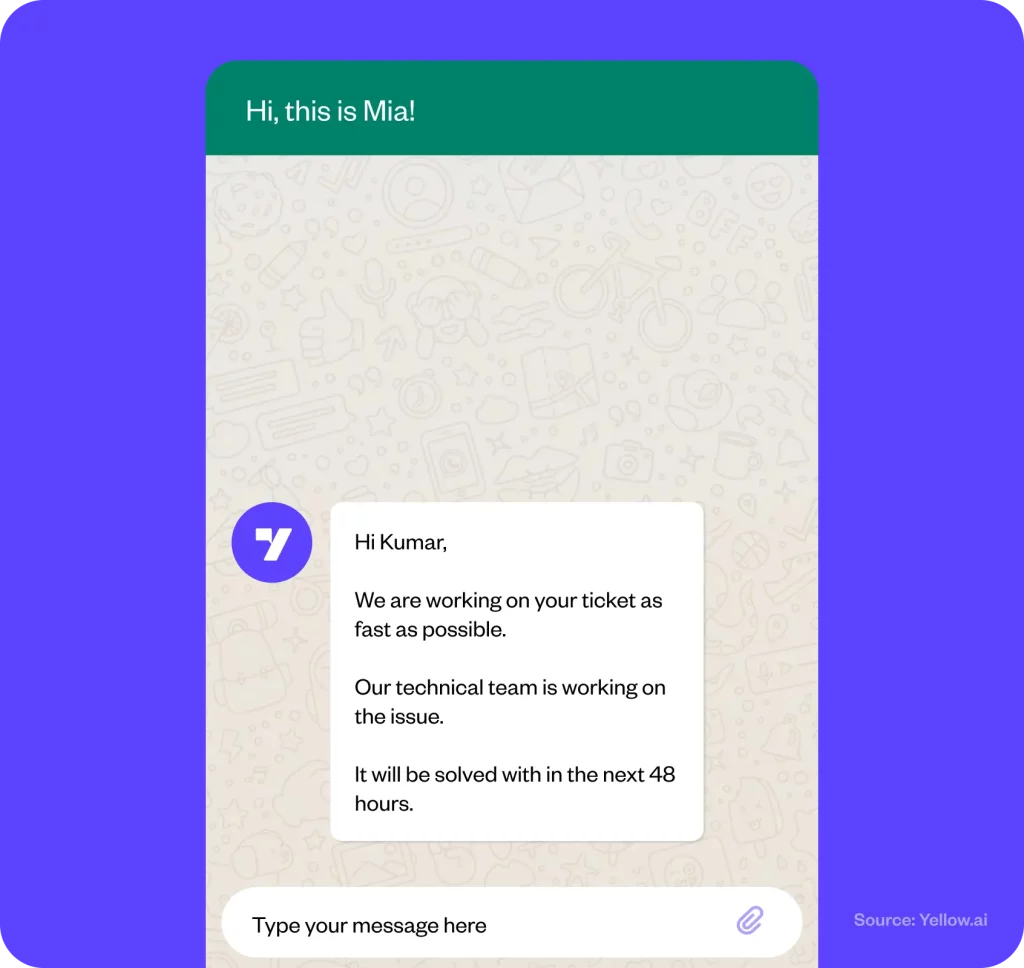
11. Transportation update
Transport schedules can change, but what shouldn’t is the customer’s trust. Timely updates ensure they can adjust their plans accordingly. Include any necessary details like gate numbers or platform changes for better clarity.
Sample
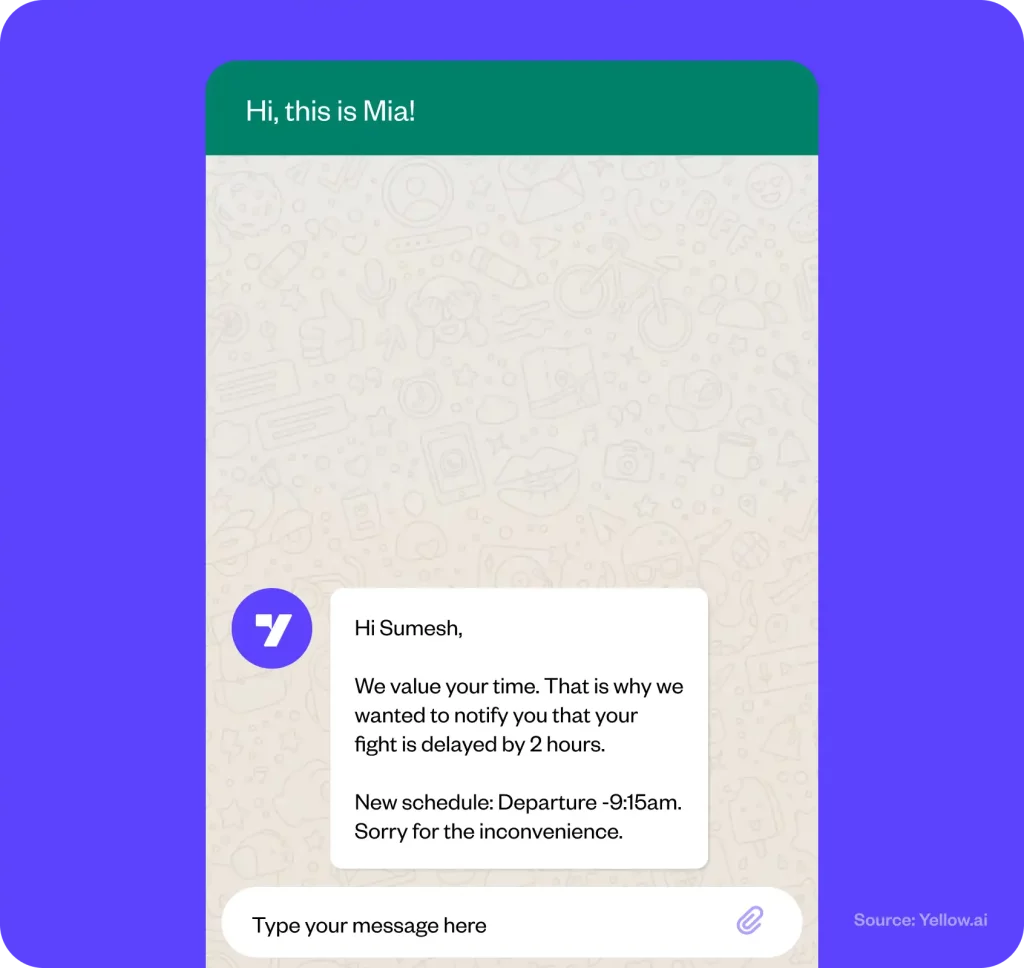
When crafting WhatsApp notifications, businesses should focus on three principles: relevance (ensure the message is pertinent to the recipient), brevity (be concise), and clarity (avoid ambiguity). Following these guidelines ensures effective communication and enhances customer trust.
Boosting effectiveness of WhatsApp notification with Yellow.ai
While the basic functionalities of WhatsApp Business offer a robust platform for customer interactions, integration with solutions like Yellow.ai can further optimize the experience:
- Automated responses: Set up predefined replies to common queries, ensuring quicker response times.
- Collaborative features: Permit multiple team members to manage incoming messages and distribute the workload.
- Extended outreach: Go beyond the default limit, reaching more people daily.
- Seamless integrations: You can integrate WhatsApp Business API with your existing CRM or tech infrastructure to send order updates, confirmations, and more via WhatsApp.
Summing up: Getting the best out of WhatsApp notification
Navigating the crowded lanes of digital communication can feel overwhelming, but WhatsApp notifications have emerged as a breath of fresh air. It’s not just about sending a ping; it’s about starting a conversation, a genuine check-in with customers. Just think about it – amid a sea of countless notifications, what catches our attention is always relevance and warmth. So, whether it’s a cart reminder, a payment confirmation, or just a friendly nudge, ensure your WhatsApp messages feel like a chat between friends. After all, it’s these small moments of genuine connection that transform businesses from mere vendors to trusted companions in a customer’s journey.

















